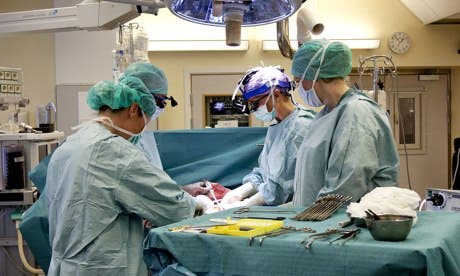
Doctors from Sweden recently revealed they have successfully completed a total of nine womb transplants, marking a new milestone for a type of procedure that is still in its infancy and is considered highly risky. The transplanted wombs came from relatives, and the doctors hope report little complications have been witnessed. Ultimately, the doctors hope their patients will be able to carry a pregnancy – something no less than a fantastic breakthrough, if it were to happen.
The women taking part in the procedure were either born without an uterus (one in 4,500 girls are born with a syndrome known as MRKH, which means they do not have a womb) or had to have it surgically removed due to cervical cancer.
The first womb transplant was carried out in Saudi Arabia in 2000, using a live donor, however the uterus had to be removed after three months because of a blood clot. The second womb transplant was reported in Turkey last year, and a lot of people got their hopes up when they heard the patient even became pregnant. Unfortunately, the pregnancy failed after two months.
Nowadays, we’re already used to hearing about transplants of hearts, kidneys, liver and all kinds of vital organs through procedures which not so long ago were deemed extremely experimental, if not impossible by some. Recent medical advancements have set the bar even higher. Past few years have seen doctors focusing not only on life-saving operations, but on some other that improve the quality of life of the patients – things like hands, jaw or face transplants. For many of the women incapable of carrying a child, there would be no greater joy than that of being able to give birth.
Dr. Mats Brannstrom, already an authority figure in this pioneering field, is trying his best to make this possible. He first got the idea in 1998, when he removed the uterus of a young Australian woman who had cancer.
“I had to tell her that she would be cured from her cancer, but she could not become a mother because she does not have a uterus,” he said.
The woman suggested then transplanting a uterus from her own mother. The idea struck and stuck with him and upon returning to Sweden in 1999, Brannstrom launched a research project on the issue. Researchers were able to bring about successful pregnancies in some animals using the procedure, and they believe chances of a successful human pregnancy are good.
From the womb
Fast-forward to 2014, Brannstrom and colleagues have completed nine womb transplants so far. The doctors report that all recipients are doing well, despite minor complications in some cases – one woman had an infection in her newly received uterus and others had some minor rejection episodes, but these were overcome fast and without further issues. In fact, many of the women had had periods six weeks after the transplants, an early sign that the wombs were healthy and functioning.
Before surgery, all women had had their eggs harvested since the transplant operation does not connect any of the women’s uteruses to their fallopian tubes, so they are unable to get pregnant naturally. In vitro procedures were made to create embryos from the harvested eggs. These were frozen and doctors now plan on transferring them soon when the moment is right. If successful, it would mark the first child birth from a transplanted womb.
There are numerous voiced concerns, however. It’s unclear whether the baby born through a transplanted womb will be healthy. For instance, all the women involved in the program are forced to take anti-rejection medication, and while data from women who had received kidney transplants did not suggest their babies were at any increased risk from the drugs, we can’t still say for sure.
Pioneering work
Some, on the other hand, have voiced criticism concerning the use of live donors. The procedure involves a bigger chunk of the surrounding blood vessels to be taken to ensure adequate blood flow, raising the risk of complications for the donor. Considering this isn’t a life saving operation and the outcomes extremely unclear, some voices have been raised calling the procedure unethical.
“What remains to be seen is whether this is a viable option or if this is going to be confined to research and limited experimentation,” said Dr Yacoub Khalaf, director of the Assisted Conception unit at Guy’s and St Thomas’ hospital in London, who was unconnected to any of the womb transplant projects.
Brannstrom warned that the transplants might not result in children but remained optimistic.
“This is a research study,” he said. “It could lead to [the women] having a child, but there are no guarantees … what is certain is that they are making a contribution to science.”
Next month, he and colleagues will run the first-ever workshop on how to perform womb transplants and they plan to publish a scientific report on their efforts soon.
Was this helpful?



